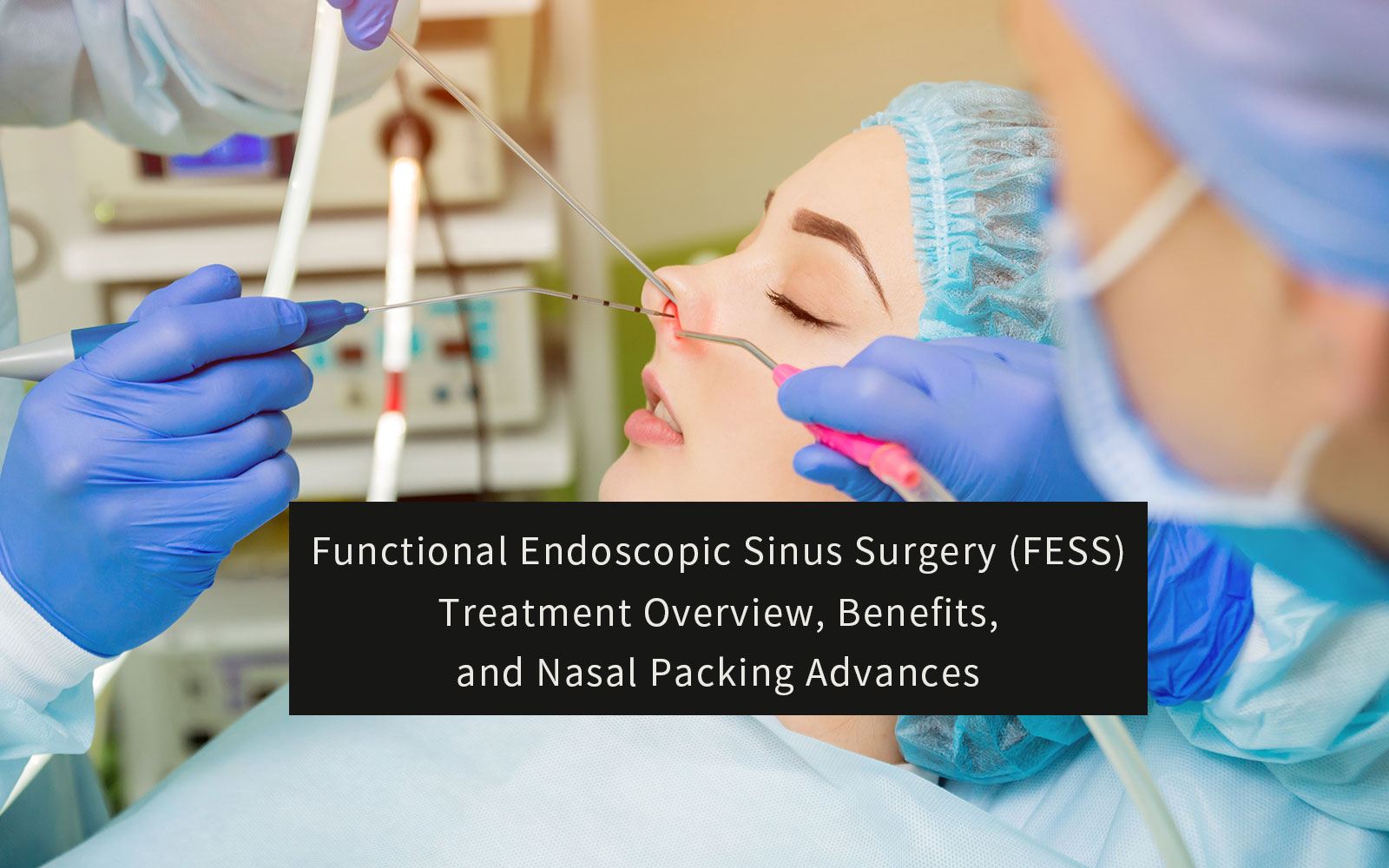Posterior nasal packing is a critical technique for managing severe nosebleeds that originate from the back of the nasal cavity. While most nosebleeds are minor and resolve with simple first aid or anterior nasal packing, some cases—particularly posterior epistaxis—require more advanced intervention. In this article, we’ll explore what posterior nasal packing is, when it’s used, the materials involved, potential complications, and post-care instructions. We’ll also compare anterior and posterior nasal packing, highlighting their differences in application and recovery.
Table of Contents
What is Epistaxis?
Epistaxis, more commonly known as a nosebleed, occurs when the delicate blood vessels inside the nose rupture. It can be caused by trauma, dry air, infection, allergies, blood clotting disorders, or high blood pressure.
There are two main types of epistaxis:
- Anterior epistaxis: Originates from the front part of the nasal septum, typically from Kiesselbach’s plexus (Little’s Area). This is the most common type and usually less severe.
- Posterior epistaxis: Originates deeper in the nasal cavity, often from branches of the sphenopalatine artery. It’s less common but more serious and harder to control.
What is Posterior Nasal Packing?
Posterior nasal packing is a procedure used to stop bleeding from the back (posterior) part of the nasal cavity. It is typically indicated in cases where:
- Anterior nasal packing fails to control the bleeding.
- The bleeding is profuse and originates from deeper vessels.
- Patients have underlying conditions such as coagulopathies or hypertension.
This type of packing applies direct pressure to the bleeding site at the nasopharynx and is often used in emergency rooms or by ENT specialists for severe posterior epistaxis treatment.
Common Types of Posterior Nasal Packing
Posterior nasal packing is a critical treatment approach when anterior methods fail to control bleeding. This section outlines the available treatment options for posterior epistaxis, detailing the types of packing materials used and their respective clinical benefits and considerations.
- Traditional gauze (e.g., iodoform gauze):
It provides high absorption but requires careful insertion by medical professionals into the posterior nasal cavity and may cause more discomfort for the patient. - Balloon-based systems (e.g., Epistat®, Rapid Rhino® 900 Series):
They are easy to use, offering dual-chamber inflation for both anterior and posterior bleeding. They are designed for easy placement and removal. Although effective, they may cause discomfort. - Foley catheters
Though not specifically designed for nasal use, Foley catheters are commonly used for their reliable balloon inflation mechanism and effective hemostasis, despite not being originally designed for nasal use. - Absorbable nasal dressings (e.g., NasoPore®, NasoAid®):
They are more commonly used in anterior nasal packing, but in certain procedures, they can be adapted for posterior nasal use.
Complications Resulted from Posterior Nasal Packing
Posterior nasal packing, while effective, carries certain risks due to the deep placement and pressure involved.
Potential Complications:
- Hypoxia or airway obstruction (especially if bilateral packing is used)
- Sinus or middle ear infections
- Vagal stimulation causing bradycardia
- Discomfort, gagging, or difficulty swallowing
- Tissue necrosis from prolonged pressure
How to Reduce Risks:
- Monitor oxygen saturation in elderly or comorbid patients
- Use prophylactic antibiotics to reduce infection risk
- Avoid overinflating balloon devices
- Limit packing duration (typically <72 hours)
- Ensure proper patient positioning and hydration
Posterior Nasal Packing vs. Anterior Nasal Packing
Anterior nasal packing is used for mild to moderate bleeds from the front part of the nasal cavity. It can involve absorbable materials, such as carboxymethyl cellulose (CMC), Hyaluronic Acid-Based and collagen-based nasal packing, which provide effective hemostasis with less discomfort. Non-absorbable materials like gauze and sponges, while also used, may cause more discomfort and are less ideal for patient comfort.
In contrast, posterior nasal packing is required for severe or refractory bleeds from deeper nasal structures. It involves more complex devices like balloon catheters or Foley catheters and requires more expertise due to higher risks and discomfort.
| Aspect | Anterior Nasal Packing | Posterior Nasal Packing |
|---|---|---|
| Location | Front nasal cavity | Deep rear nasal cavity |
| Bleeding Source | Kiesselbach’s plexus (Little’s Area) |
Sphenopalatine artery area |
| Tools | Gauze, sponges, tampons, absorbable nasal packing | Foley, balloon catheters |
| Severity | Mild to moderate | Severe or refractory |
In some cases, posterior nasal packing must be combined with anterior packing to prevent retrograde bleeding or provide additional tamponade effect.
Posterior Nasal Packing FAQs
What are common errors when performing posterior nasal packing?
- Incorrect placement or overinflation
- Not securing the device properly
- Failing to provide concurrent airway monitoring
Is anesthesia needed when performing posterior nasal packing?
Yes. Local anesthesia or sedation is typically used to reduce discomfort, especially with deep packing or balloon catheters.
How long does posterior nasal packing stay in?
Usually 24 to 72 hours, depending on the patient’s bleeding risk and clinical status.
What will happen after posterior nasal packing is removed?
Patients may feel relief from pressure. Minor bleeding is possible and should be monitored. Continued care is essential to avoid rebleeding.
Is it possible to still have a nosebleed with posterior nasal packing in?
Yes, although rare. If bleeding continues, it may indicate packing failure, incorrect placement, or an underlying arterial bleed requiring embolization or surgical ligation.
What are the care instructions for posterior nasal packing?
- Avoid strenuous activity or lifting heavy objects
- Do not blow your nose
- Sleep with head elevated
- Take prescribed antibiotics (if advised)
- Report signs of infection, high fever, or breathing difficulty
- Attend all follow-up appointments promptly
Key Considerations for Posterior Nasal Packing in Epistaxis Management
Posterior nasal packing remains a crucial intervention for managing severe or refractory nosebleeds that cannot be controlled by anterior methods alone. While it requires greater clinical expertise and carries a higher risk of complications, it is often life-saving in critical cases. Understanding the differences between anterior and posterior epistaxis, selecting the appropriate materials, and providing diligent post-procedural care are essential for achieving successful outcomes.
However, it is important to note that 90-95% of epistaxis cases originate from the anterior nasal cavity. In these cases, NasoAid® Nasal Dressing provides an effective and patient-friendly solution for hemostasis and can be used alone or in combination with other methods when necessary for selecting posterior epistaxis cases.










